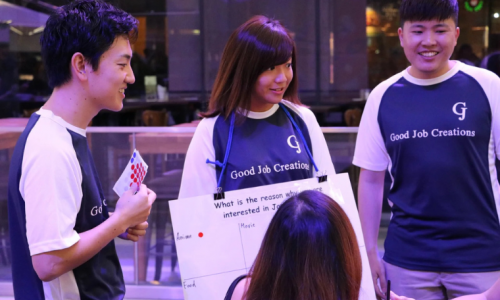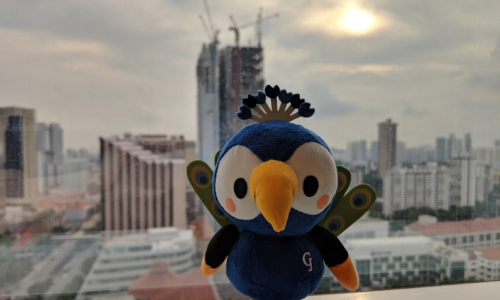This article spotlights three leaders at Good Job Creations who discuss the type of conflicts they encounter and how they manage and resolve them.
6-minute read by Destiny Goh.
Take a quiz to see your conflict management style here.
According to a study by CPP Global, the average person spends nearly three hours each week dealing with conflict at work; it only seems wise that we make those occupied moments worth it.
Type of Conflicts:
Conflicts often have reason. You do not snap at colleagues in meetings or avoid them at all costs just because you feel like it.
At work, conflicts often start with differing opinions, unpleasant situations, or unresolved issues that escalate over time.
We created a poll to gauge the most common type of conflict in a corporate setting and miscommunication came up top at 41%. They are followed by differences in working styles at 27%, unclear job expectations at 22% and personality clashes at 10%.
Miscommunication:
According to Manager Jun Hao, everyone has unique characteristics and personalities. Some members perceive or interpret their leader’s instructions and goals differently then pursue them the best way they know. In contrast, others may feel unhappy or indifferent about a decision, resulting in varying, undesirable outcomes.
Difference in working style:
Team Leader Ayumu Matsuki mentions that every leader has different leadership styles. When an approach is decided, it may not appeal to another and you will be scrutinised for how you run things. He says it’s not about what is done that causes conflicts but rather how it’s done.
Creative Idea-based conflicts:
General Manager Gabriel Chua explains that having a creative team is great. Still, with different perspectives and views combined, individuals tend to act on what they think works best, resulting in disagreements that deviate from the initial goal.
Other conflict factors arise from a clash of personalities of incompatible characters, differing views and beliefs, recognition and status: who should be in complete control or taking credit for success?
A closer look at conflict avoiders and seekers

In her book Dealing with Conflict, Amy Gallo discusses two types of people: conflict seekers and avoiders. Both styles reveal their complications; conflict-avoiders spend an odd amount of time dwelling in frustration, harping on something the past or anticipating the worst. Conflict seekers may earn a reputation for being work bullies, challenging to work with, and arrogant. Several factors, like prior experience, can influence a person’s default approach to conflict. They could be dismissed or overlooked by others when they spoke up or were always praised for their straightforwardness. Differences in cultural practices in some Asian cultures prefer saving face than being caught in a brawl, or Latin American cultures, where people do not shy away from making their points.
What strategy to use and when
If you have exhausted all options but the same problem persists with just one person, you can opt for a direct approach.
However, if conflict is discouraged in your organisation, you could indirectly address it by approaching an experienced third party or manager.
If you realise that the other party has no intentions of having a productive conversation and is set in their ways, you can choose to do nothing about it.
Conflict Management Tips:
It’s important to understand the party you’re dealing with, whether they are keen on having difficult conversations or actively avoiding them, or how they prefer to be communicated with.
Resolving Conflicts:
Jonathan Hughes, a partner at Vantage Partners, says the essence of a resolution is to be fair and reasonable, satisfying as many interests as possible and improving relationships.
Gabriel says that a collaborative effort helps resolve team conflicts. You can invite others to build on your ideas but also help them see things from a leader’s perspective.
When members feel heard, important and understand your vision, they will be more inclined to work together toward the direction you set.
Being creative helps Ayumu navigate working with management. He says leaders sometimes disagree or disregard another’s strategies; some get overlooked, hence the conflict.
Yet, he believes there’s more than one way to problem solving. While you agree with them, you can also explore other methods or strategies and build on their ideas, this shows humility and resourcefulness.
Jun Hao says that someone must make the final decision. Sometimes, the team must prioritise staying focused and objective-driven amid a conflict.
Rationality, logic, results, and facts help make collective decisions on the desired milestones to be achieved, actions to take, and unproductive tasks to eliminate.
Sometimes conflict resolutions don’t pan out how you wanted them to, try as you might. You can reach out to someone more experienced to help moderate the conflict or give it time before revisiting the subject.
If you realise there’s nothing else you can do, it may be time to move on.
For more information on how we can fulfil your hiring needs or job opportunities?
For Job seekers, please fill out this form.
For hiring needs, please fill out the Request Talent form found on the top right of our website.





